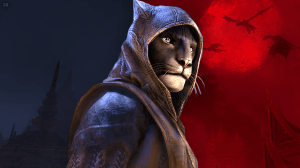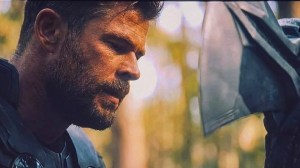
One of the big announcements to emerge from DC Comics at San Diego Comic-Con this weekend was that the ongoing plot point of there being multiple Jokers will finally be resolved. The idea was first introduced in July of 2015, leaving the idea to linger for three years with no clear resolution (or even much development) in sight. Until this weekend it had become a topic of debate as to whether this story would ever be resolved.
Videos by ComicBook.com
The trio of Jokers have not played into the Rebirth runs of Batman or Detective Comics at all, with the only appearances by the Clown Prince of Crime being consistent in look and personality. However, this story has finally found a home as Johns announced that he and artist Jason Fabok would be telling it in a three part miniseries under DC Comics’ new Black Label line. That means readers can expect a mature story produced in an elite format that will also still be a part of continuity.
So where did this story begin? What has been going on? And what hints are there as to who these three Jokers really are? We’ve rounded up everything you need to know before the story begins.

Why Are There Three Jokers?
In Justice League #42, during the events of “The Darkseid War,” Batman came to occupy the omniscient Mobius Chair and was provided with any answers he might desire. He first asked who murdered his parents and was treated to the expected answer of Joe Chill. Then he asked who The Joker really is and was given a shock. It wasn’t until Justice League #50 that Johns revealed what was so surprising about the answer. The Mobius Chair did not provide Batman with a single identity, but revealed there were three distinct Jokers in existence.
The mystery was mentioned again shortly thereafter in the pages of DC Rebirth #1 where it was one of many plot points shown to readers that would guide DC Comics over the next several years. Much of what was revealed in that issue has been addressed in a meaningful manner, especially now that Wally West has helped to return additional characters and the Doomsday Clock event has begun. However, the three Jokers have remained a static mystery, never denied, but never answered either.

Where Have They Been?
The Joker has not been the most prominent villain during the first couple of years of Rebirth comics, but he has not been entirely absent either. He most notably appeared in Tom King’s Batman run in the build to the wedding in Batman #50. This version of The Joker was shown to be similar to the one from Scott Snyder’s run, convinced that he and Batman are codependent, and made no reference to the mystery.
There have been several instances of other character’s sharing mantles during this time. The return of Wally West in DC Rebirth #1 restored multiple Flash legacies and there were two Superman figures during the start of Rebirth, until the version from the New 52 sacrificed his life. It is apparent that the continuity-scrambling events of Flashpoint and return of multiple universes in Multiversity are playing havoc with current stories, but it is unclear whether these are related to the multiple Jokers in existence now.

Who Are The Three Jokers?
The big announcement at San Diego Comic-Con has shone more light on this mystery than everything in the past three years. A combination of Jason Fabok’s new cover for the upcoming miniseries and some key comments from Geoff Johns make it possible to guess the identities (or at least the essential stories) for each of these versions of The Joker. Johns commented in a panel that the story would be focused on unresolved traumas from throughout The Joker’s history, specifically commenting that it would involve Jason Todd, Barbara Gordon, Jim Gordon, and Batman. The new cover shows all three Jokers in different costumes related to specific moments from throughout Batman’s history.
One Joker is clearly connected to the “Death In The Family” storyline where he killed Jason Todd. He is shown wearing both the same trench coat from that story and still wielding a crowbar, the same weapon he used to beat Jason Todd before exploding his body. This iteration of the character was particularly flamboyant, playing off even his most dangerous outings and roles as a gag.
Another Joker appears to be connected to the famous Batman story The Killing Joke where he paralyzed Barbara Gordon and tortured both her and her father. He can be seen on the cover wearing the same purple coat and suit following his initial outing in a Hawaiian shirt (something else Johns said would be referenced). This version of the character is one of the darkest seen to date and managed to push Batman to the brink of insanity as well.
With the two versions of The Joker tied to traumas for Jason Todd and the Gordon family identified, that leaves only the one most closely tied to Batman. While this third Joker remains something of a wildcard, it’s a reasonable guess that he is the same version most involved in Snyder and King’s runs over the past decade. This Joker focused religiously on Batman and effectively killed his arch-nemesis in the story “Endgame.” That would also make this Joker the one who was also mind-wiped in the caverns under Gotham City and given a second chance at life during the events of “Superheavy.”
While it’s unclear exactly which version of The Joker has been involved in which stories during the past three years, and even the adventures before this revelation, their most iconic moments and personalities are beginning to emerge. At the center of the new cover rests a version of the Joker card that is famously mounted in the Batcave. It refers to one of the character’s earliest adventures and ties all three versions of The Joker together. Johns has said that when the new miniseries premieres, The Joker is actually the hero of the story. The real question now is whether that refers to just one of them or all three.








